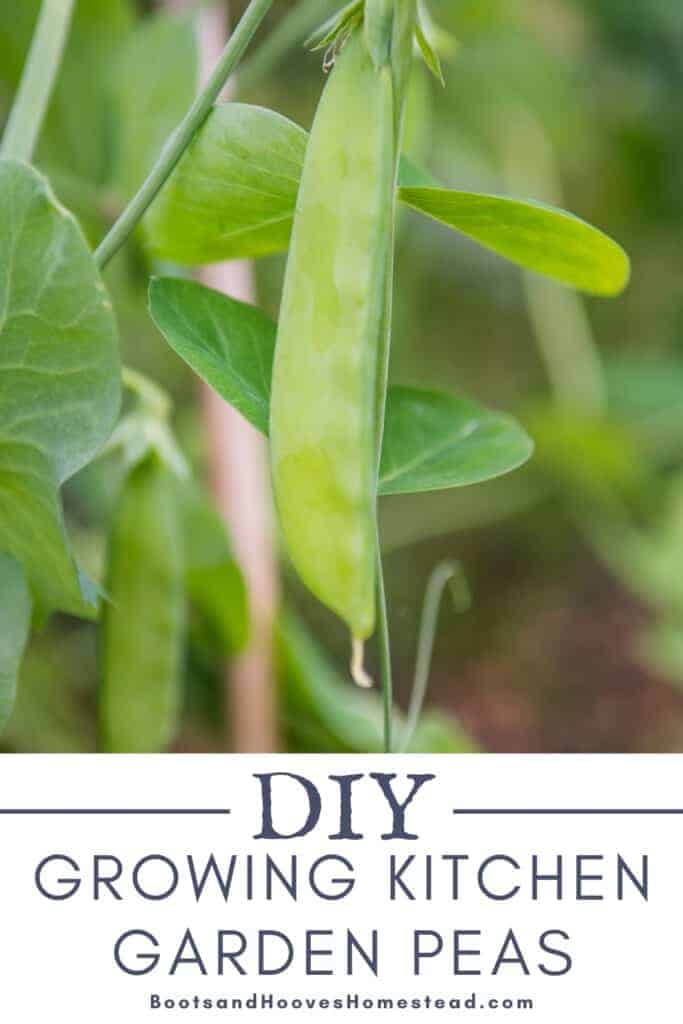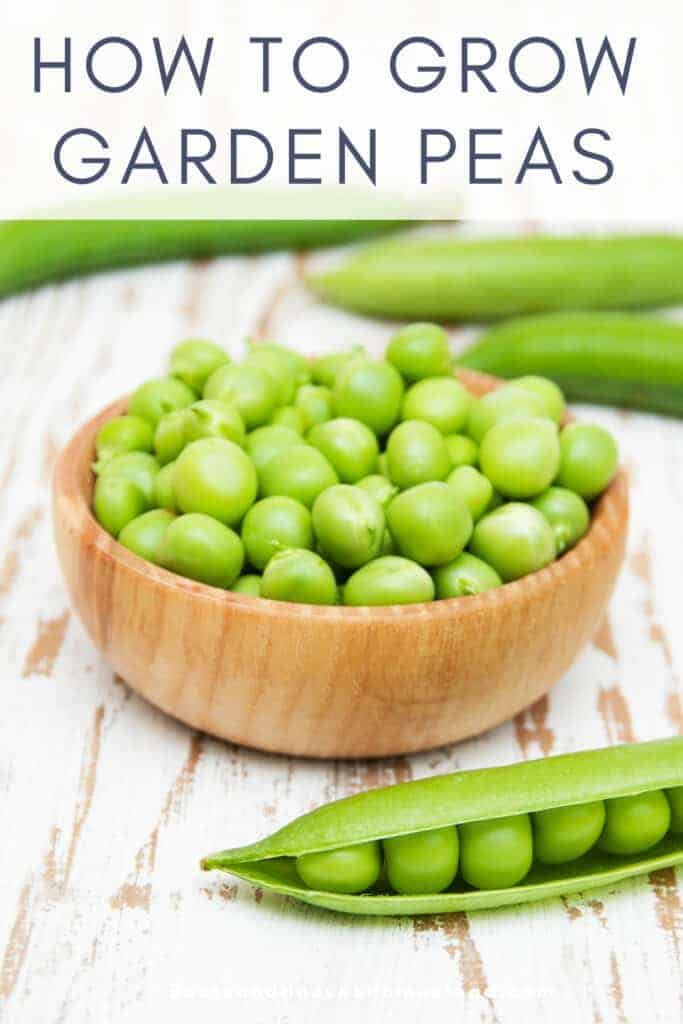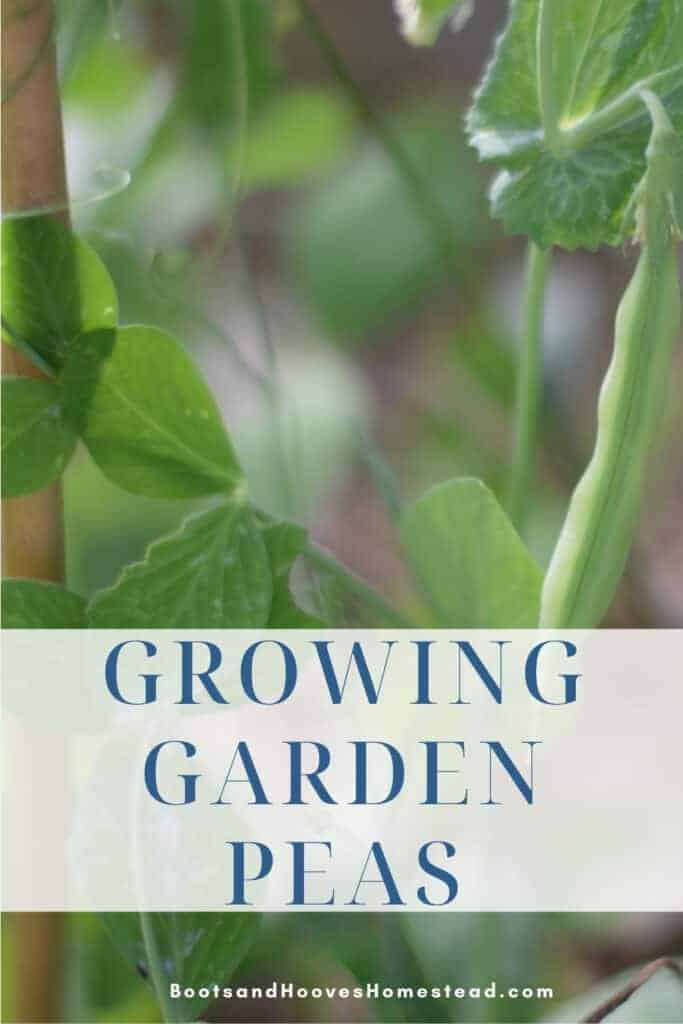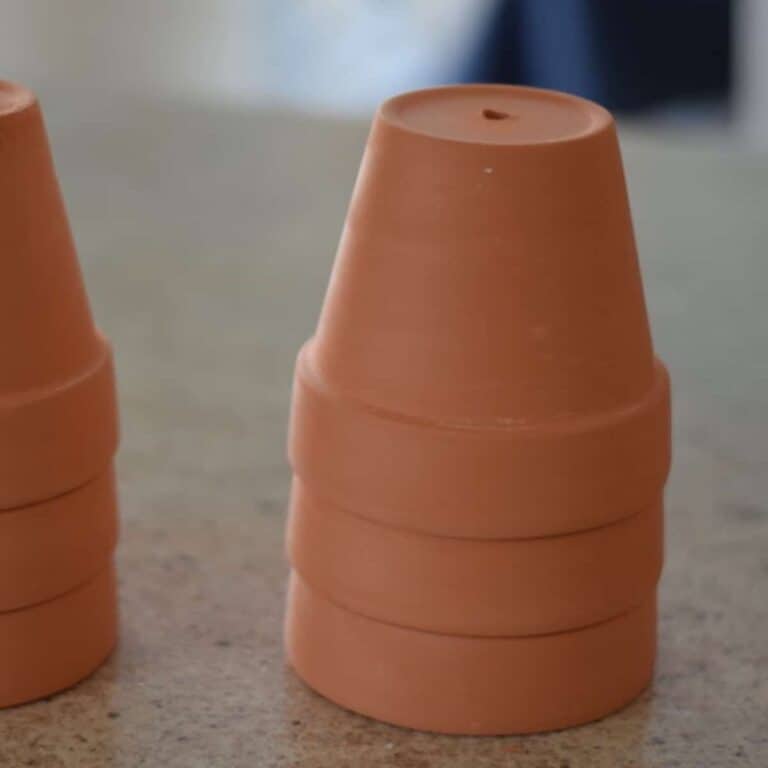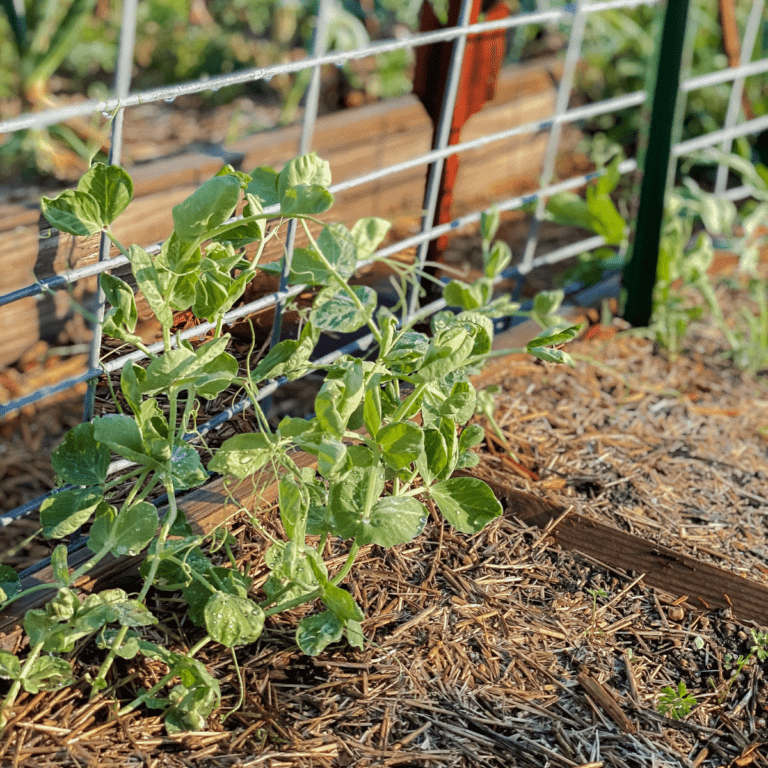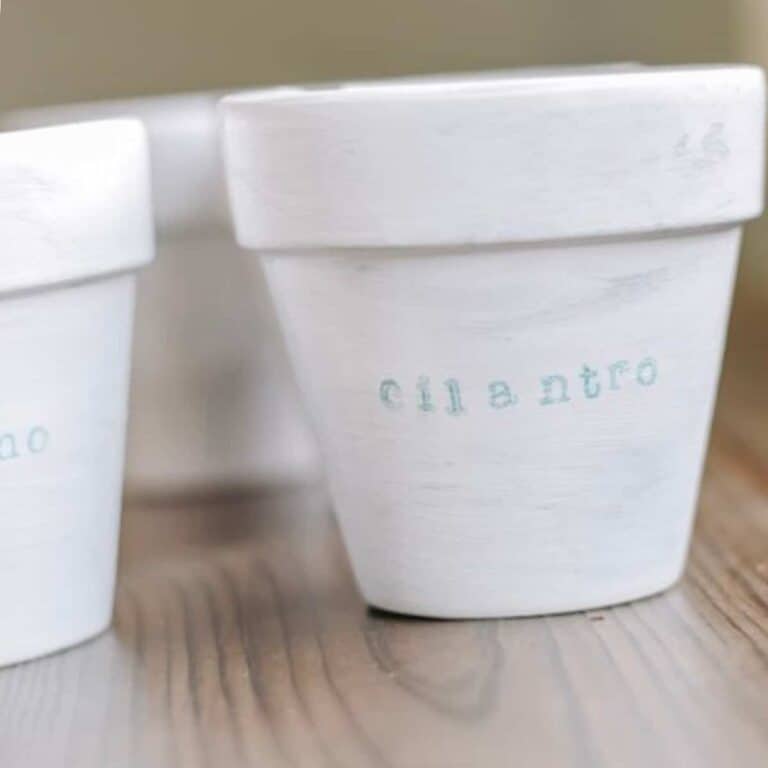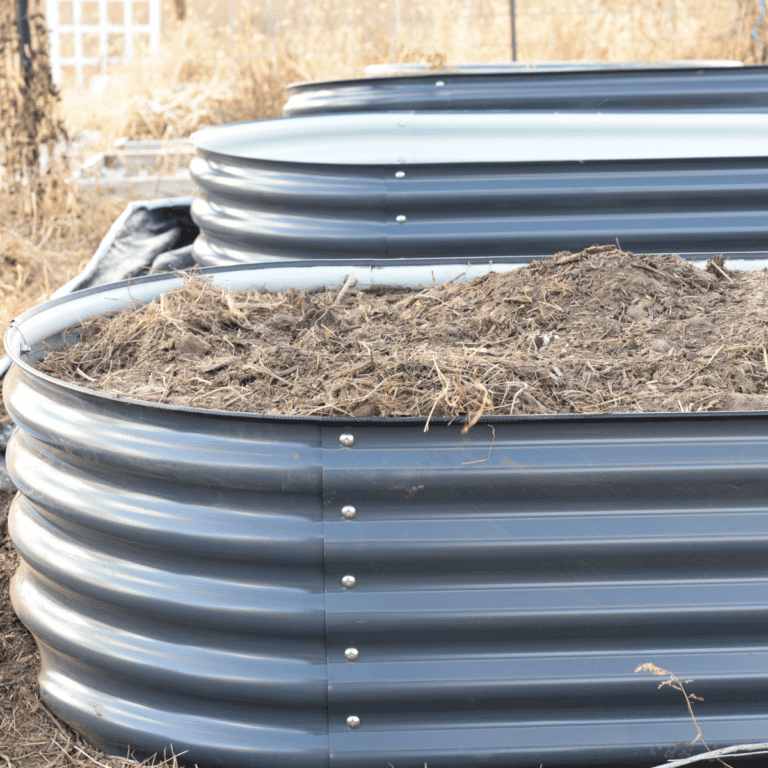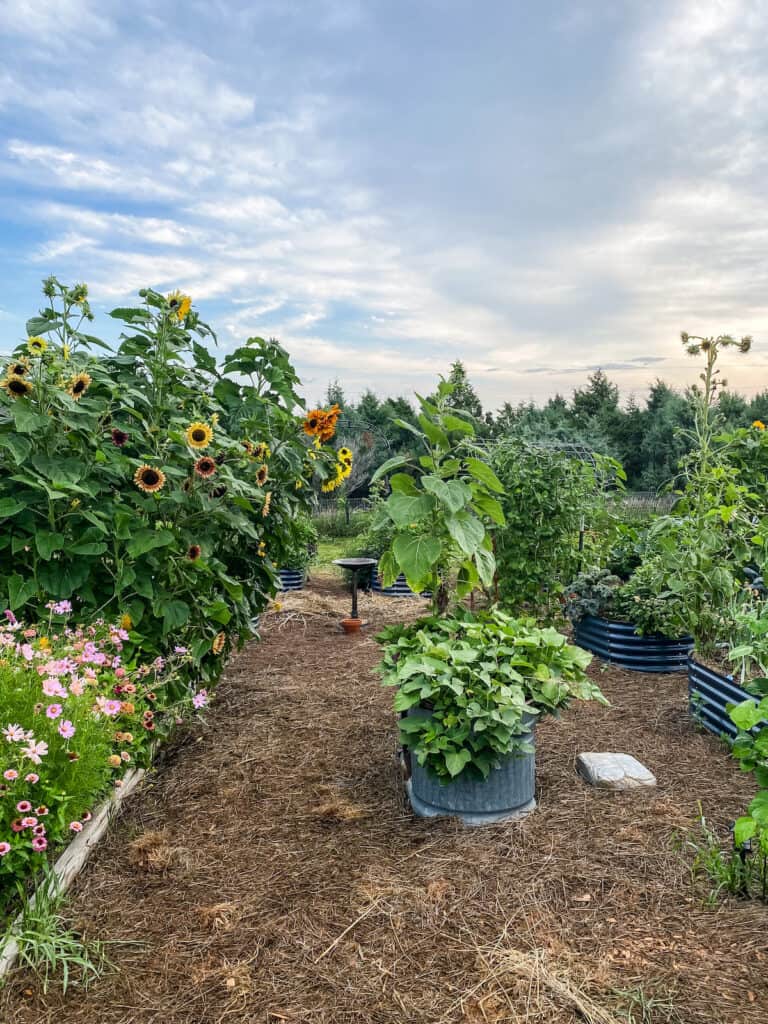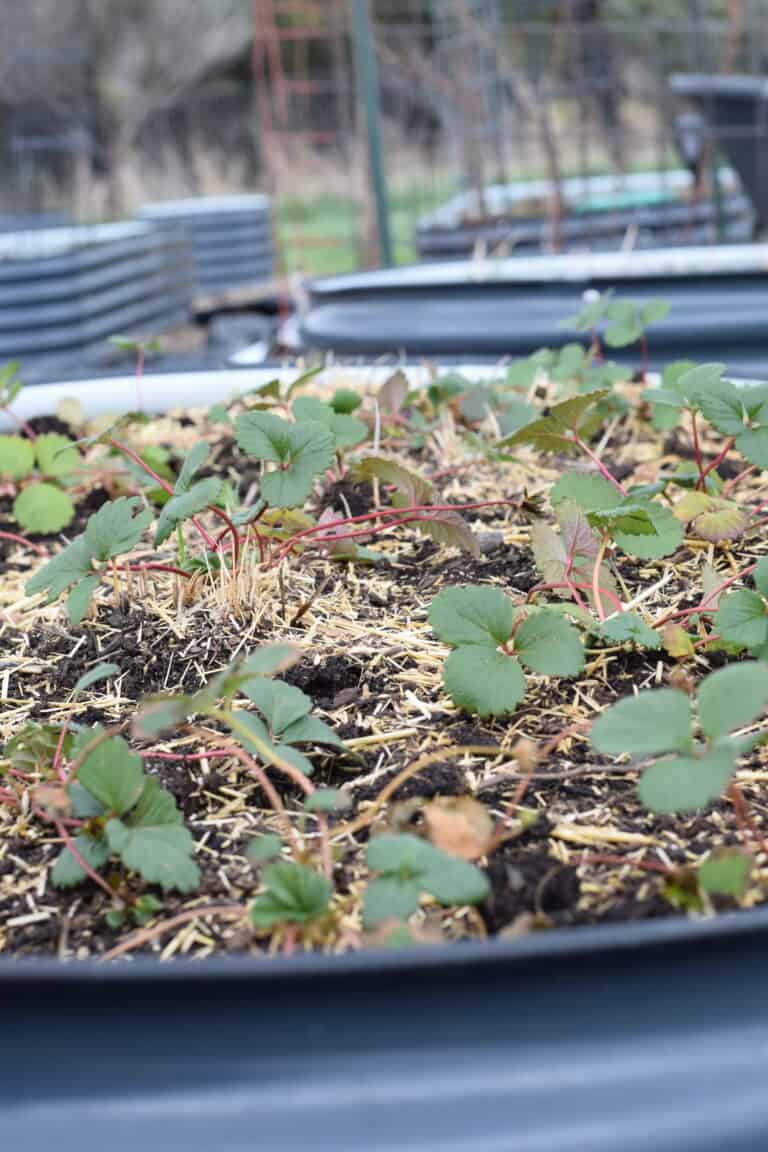How to Grow Peas
A great addition to the kitchen garden or potager are English peas, aka garden peas. If you’re new to gardening, we will share how to grow peas to help you with your first harvest.
You may be wondering, how do peas grow? Do they need stakes to climb like tomatoes? How much sun and water do they need to grow successfully?
Read on to find the answers to these and more questions.
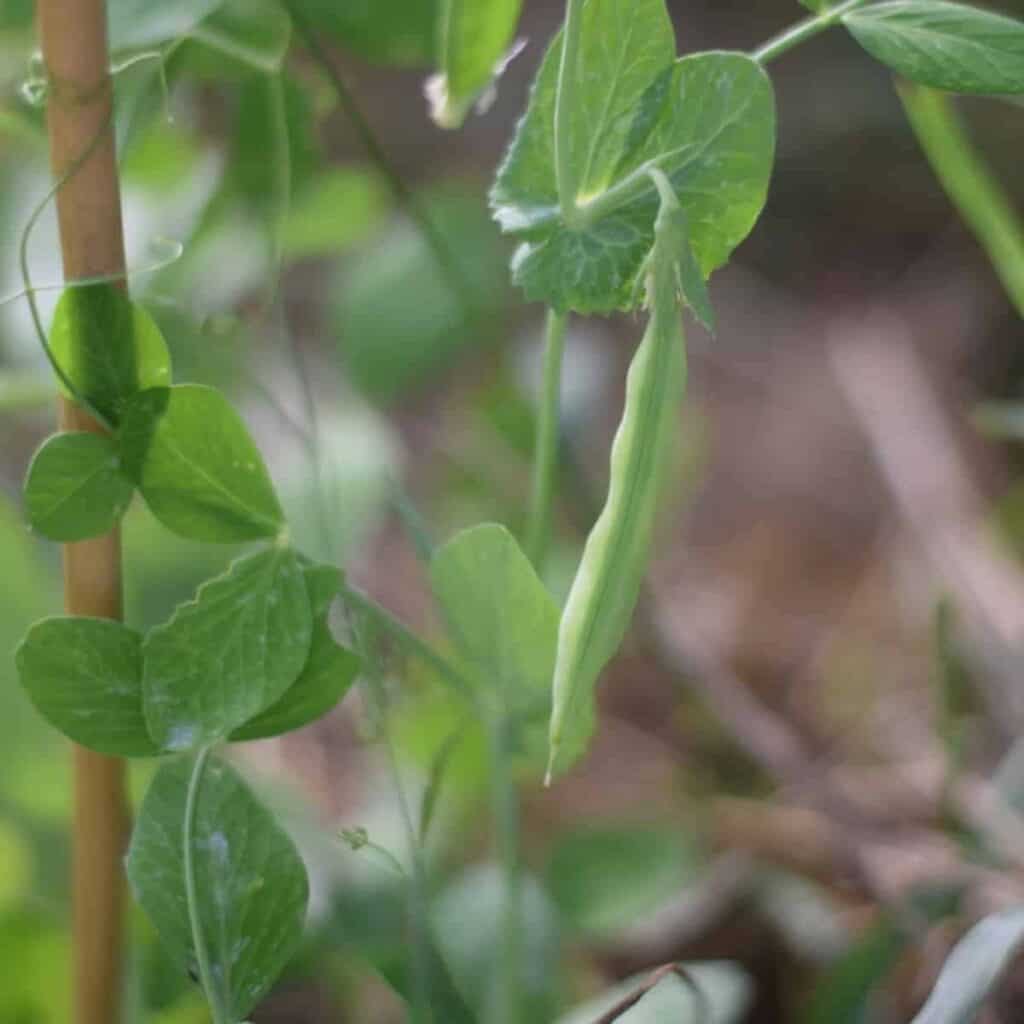
How To Grow Garden Peas
The name might make you wonder, but garden peas are the small green peas commonly known as English peas.
Their pods are round and inedible. The peas must be shelled before cooking or freezing.
Garden peas can grow in a small plant known as “bush” peas. Green Arrow is a popular bush type pea.
Other varieties can grow to between three and seven feet tall and must be trellised or staked. Alderman is a type of tall pea plant that must be staked.
What Type Growing Conditions Are Necessary?
All plants thrive on sunlight and water. Some plants do better in cool weather conditions, while others enjoy blistering sunny weather.
Gardeners who want to know how to grow garden peas should understand they need to be planted in spring. As soon as the ground becomes workable is the time to plant.
Even if it snows after you’ve planted your peas, the plants will grow well. They like cooler spring weather. They also like full sun.
If peas are planted in partial shade, the product won’t taste as sweet as it does in full sun.
Most sources will tell gardeners that peas can be planted around St. Patrick’s Day in March. Planted later, and the plants won’t thrive.
In What Soil Do Garden Peas Grow Best?
As with most garden vegetables, peas grow best in well draining soil. Loamy soil is proffered for most plants.
Plant seeds can rot in long term standing water, so the plant beds need to be well drained. If necessary, raise the plant beds up between six and eight inches to ensure proper drainage.
To prepare your planting beds in the fall, turn over the plant bed soil about two to three inches with manure or another type of compost. Then mix wood ash and bonemeal into the soil.
This puts phosphorous and potassium into the soil, both of which garden peas need for maximum nutrition. Too much nitrogen in the soil, however, will grow some pretty foliage but not peas.
A soil test kit is helpful in determining the ph of the soil.
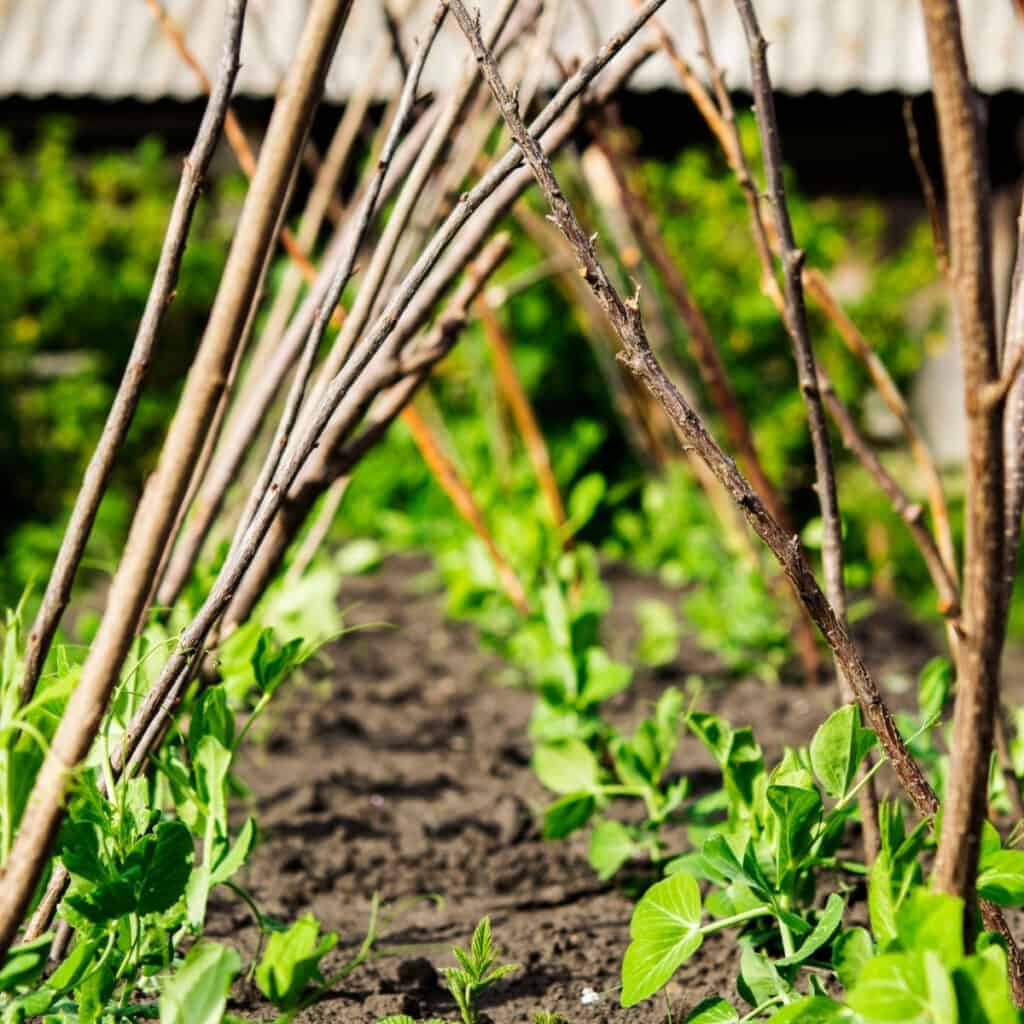
How To Grow Peas
Not only must gardeners prepare the soil for planting, they must also prepare the seeds for optimal growth. Soak the peas overnight before you plant them. The seeds will germinate better.
Plant them an inch deep about two inches apart. Plant your rows a foot to two feet apart.
When the foliage appears above ground, the peas will climb whatever is nearest them. Place your stakes or trellises when you plant the seeds. Remember the height the peas will grow as indicated on the seed packet.
Water the peas just enough to prevent them from wilting. If you let them dry out, the peas will produce no pods.
Weed the pea beds by hand. Weeding them with a hoe will pull out the plants. They’re shallow growers, so gently weeding them by hand produces the best results.
Rotate your pea beds every year or two to take advantage of the nitrogen peas produce. Other plants need it as well as giving the soil nutrients of their own.
Want to save this?
Peas grow better in 70 degree temperatures. If it gets hotter than 80 degrees, the peas won’t produce pods or the pods will become hard and tough.
This makes garden peas best for Spring and Fall gardening.
How Do Peas Grow With Companion Plants?
Companion planting in your vegetable garden means the plants garner the benefits of nutrients and pest repelling properties of the companion plant.
Gardeners unacquainted with the practice aren’t aware that simply growing certain plants next to others can leach the nutrients out of the plants to which they’re next.
Planting tomatoes next to peas, for instance, isn’t a good idea. The blight that affects tomatoes could kill your peas.
Good companion plants for peas include:
- carrots
- celery
- corn
- cucumbers
- eggplants
- strawberries
The Native Americans planted beans next to corn, so the beans could climb the corn stalks. Low growing vegetables like squashes provide shade so weeds don’t take over the garden.
This could be something to try with peas as well.
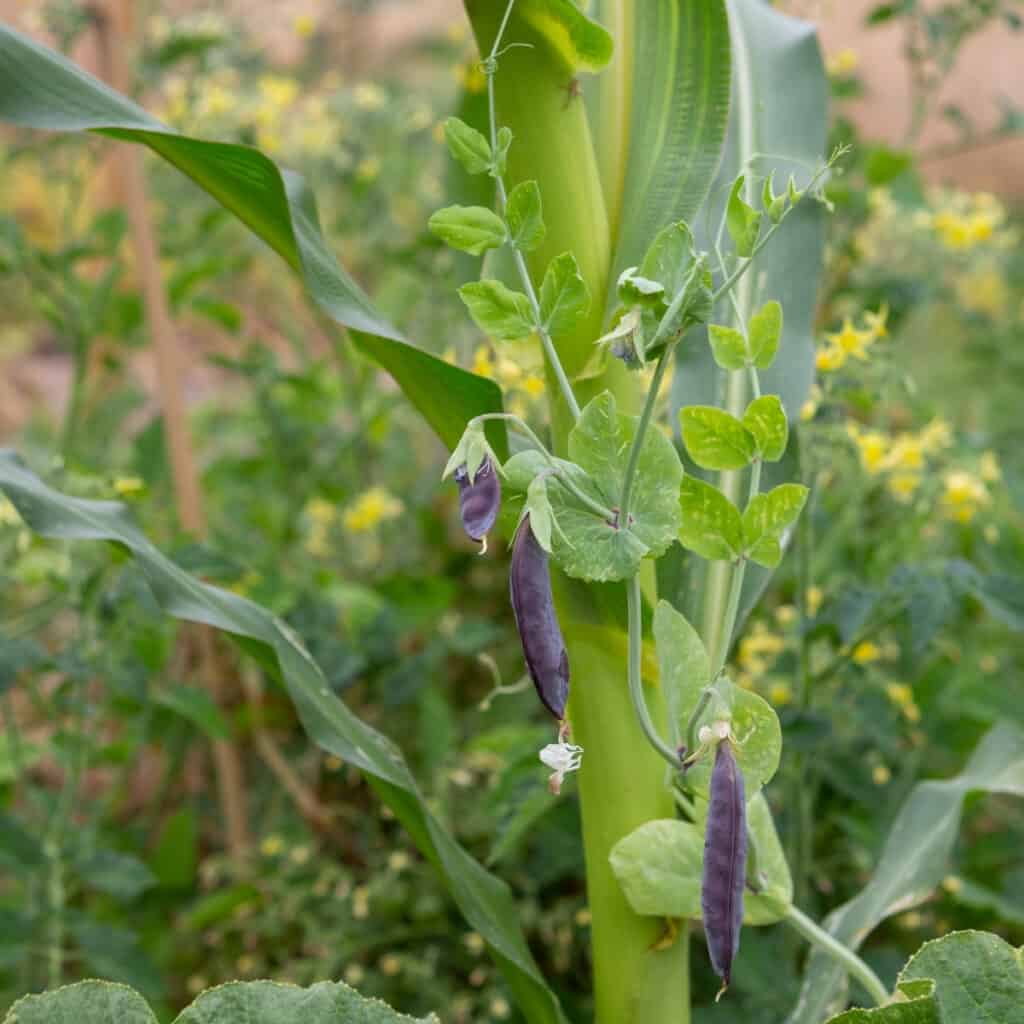
Don’t plant beets next to garden peas due to their stunting the growth of the other
Some gardeners plant herbs and/or flowers in their vegetable or kitchen gardens. Some herbs attract pests that would eat the vegetables or cause disease to the plants.
Other herbs give the vegetables a better flavor as in chives improving the flavor of tomatoes. It’s not so good for peas, though.
Herbs and flowers best for mulching or nourishing turned over soil include:
- Alyssum. Good for weed control
- Yarrow. Aphids hate the scent
- Garlic. Excellent pesticide. Do not plant near peas for any reason
Herbs and flowers good for pea plants include:
- Basil. Repels pests peculiar to the pea plant foliage
- Nasturtiums. Pea pests are attracted to the flowering plant and will abandon the peas
- Cilantro
- Mint
Learn more about the benefits of companion planting.
Harvesting garden peas
Garden peas are mature at 60 to 70 days. Since they mature fast, watch them as soon as the plants flower.
Picking your garden peas helps more pods develop. Picking them in the morning just after the dew has dried means they’re at their crispest.
Hold the pea vine with one hand while you divest it of its pods. This prevents harm to the plant.
Hard pods or dull colored pods are over-matured. If you miss the peak time to pick, you can still pick them and freeze them for later use.
Shell the peas. They can be placed in plastic freezer bags or plastic storage bowls. Garden peas last about five days in the fridge, but they last a bit longer in the freezer.
Typically, they should last about 6 months or even a bit longer in the freezer. Cook them until they’re soft and no longer shiny green. Bon apetit!

